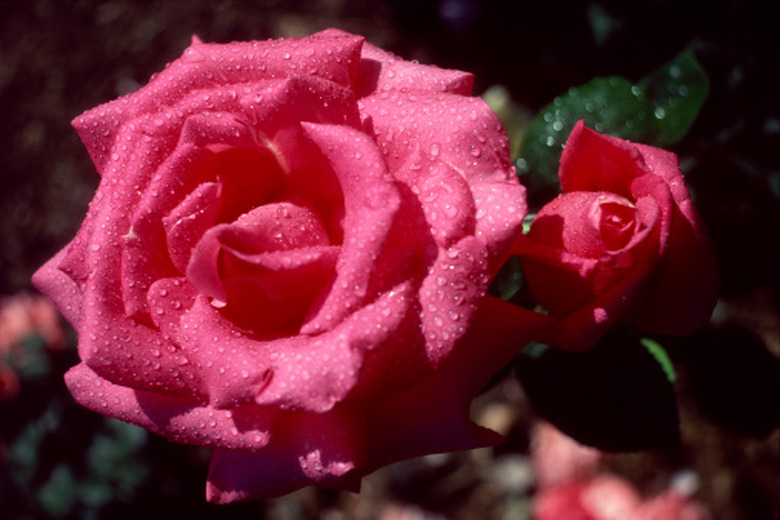Why Does A Rose Petal Edge Turn Brown?
Prized for blooms that appear in a variety of shades and scents, roses liven up the landscape and attract butterflies to the area. The ornamental beauties require stringent growing conditions to thrive and remain healthy. Browning petal edges indicate problems with the roses that require immediate attention to prevent spreading.
Thrips
Thrips (Anaphothrips obscures) are tiny insects with fringed wings that feed on rose petals with their sucking mouth parts. Measuring less than 1/16 inches long, these pests damage rose foliage and blooms, causing the leaves to appear yellow and petals to turn brown at the edges. Although small infestations cause aesthetic damage, large colonies stunt rose growth and case premature leaf and flower drop. Prune off affected roses using sterilized scissors. Introduce natural predators such as green lacewings and parasitic wasps for biological control, or treat infested parts of the rose plant with neem oil or horticultural oil.
- Prized for blooms that appear in a variety of shades and scents, roses liven up the landscape and attract butterflies to the area.
- Introduce natural predators such as green lacewings and parasitic wasps for biological control, or treat infested parts of the rose plant with neem oil or horticultural oil.
Freezing Temperatures
Exposure to extreme weather causes rose petals to turn brown at the edges. Although most rose varieties go dormant during the winter, some roses in warmer climates set buds before the last frost. If freezing temperatures arrive unexpectedly, the petals of these rose buds appear stressed and turn brown. Similarly, unexpected freezing temperatures in the fall while the rose plant is still blooming cause the edges of petals to turn brown.
Sun Damage
Roses thrive in well-draining soils and exposure to six hours of direct sunlight every day. Enriching the soil with organic matter and mulching during the summer helps retain soil moisture and keeps the roots cool, particularly during periods of drought. Roots of rose plants that fail to receive adequate moisture become stressed, especially during prolonged periods of direct sunlight exposure and insufficient soil moisture, which can cause petal edges to turn brown. Transplant the rose to a well-draining spot or provide the rose plant 3 to 4 inches of water every week.
- Exposure to extreme weather causes rose petals to turn brown at the edges.
- Roots of rose plants that fail to receive adequate moisture become stressed, especially during prolonged periods of direct sunlight exposure and insufficient soil moisture, which can cause petal edges to turn brown.
Botrytis Blight
Also called gray mold and wooly mold, Botrytis blight is a fungal disease that attacks a large number of ornamental plants including roses. Fungal spores thrive in cool, moist areas with high humidity and poor air circulation. Botrytis blight causes rose petals to appear spotted or turn soft and brown at the edges. Prune infected parts and apply a fungicide containing mancozeb or chlorothalonil. Collect and destroy plant clippings from around the base of the plant to keep the spores from overwintering.
